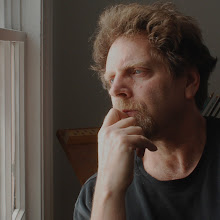


The serial patterns of Paris. The second image is of the remarkable wall in the metro station at Concord, where the tiles, in total, bear every letter, number and punctuation mark from the Declaration of the Rights of Man.
CULTURE AS CORNFLAKES: SERIALISM IN THE ARTS







"Nice," below, by Carlos Estrada Vega, put me in mind of this quilt.
As names of movements tend to be, "cubism" was not at all an accurate description of the ‘shattered glass” reductivism of Picasso and Braque. But these, above, are unequivocally cubist.
The first is a quilt named “Tumbling Cubes: Stairway to Heaven.” I was raised among Mennonites and a very early recollection I have is sitting under a quilt, stretched on its frame in a large room and in the process of being stitched, thinking I was in some entrancing, low-roofed pavilion where cups of kumquat lemonade would presently arrive.
I concur with Robert Hughes that Amish and Mennonite quilts should be credited more than they are for inventing the particularly American geometric abstraction that painters and sculptors in time would imitate. What about their piety transmuted itself into the complex geometries of their quilts? There was, and still is, a Muslim-like aversion to pictorial iconography, which in turn, as with the arts of Islam, fostered at times a delirious predilection for pattern. There is, as well, something essentially geometric about the economy of farming: square fields, rectangular gardens, longitudinal furrows, long ladders, cubes of hay and the circle of the year itself.
The second is a staggering work of skill and imagination. Cubes of crystal glass, conceived by Eric Hilton and created by engravers at Corning GlassWorks, fit together so perfectly they almost fuse. The assembled block is an archive of almost hallucinatory emblems, some contained and squared within their own cube, others spreading to adjacent cubes. Externally the block is a pure marvel of jewelled smoothness; internally it is a Max Ernst cabinet de curiosités, a glorious and bewildering palimpsest of dream images.

Top of the A list on any art-minded visit to Toronto should be Galerie Lausberg. If indeed the modes of minimal and optical art are in eclipse, you’d hardly know it, standing in the chaste shimmer of the current show, a succinct belles lettres of the field. What’s more, pristine taste is equaled by the congeniality of the personnel Find that, if you can, in Chelsea! The following is extracted from the brochure of their current group show, “Beyond Painting”:
Lausberg contemporary's mandate to serve as a forum for innovators in the minimal and optical art realms finds its ultimate expression in the forthcoming 25-artist international group exhibition. Beyond Painting brings to the forefront less traditional, more 3 dimensional forms utilizing unusual media or materials, such as adding machine rolls, aludibond, brushed steel, glass, plexiglas, resin, and silicon.
Nice, by Carlos Estrada Vega, employs a list of ingredients worthy of a mayonnaise by Alain Ducasse. Each square has a magnet which fixes it to a steel plate. You can change the arrangement, if Rembrandt aspirations overtake you.

Cy Twombly has painted on the ceiling of the Salle de Bronzes in the Sully wing of the Louvre a large work that emulates the trompe-l’oeil effect of painted ceilings in grand halls all over Europe, the illusion of no ceiling at all, but rather an unobstructed view of the blue heavens above. What are those recurring circles? Are they planets, among which the immortals abide, the greatest sculptors of Greece whose names are written on the ceiling? The same mix of astrology and human greatness may be found on the ceiling of another chamber in the Louvre, the outlandish Galerie d’Apollon, where names of famous artists are surmounted by the signs of the zodiac.
French museums started the practice of juxtaposing contemporary art with classical. It is brilliantly refreshing and it serves to make the works of a permanent collection actually work for their keep rather than just hang in a passive enfilade according to date, style and country of origin. And it does enhance each work, often in very surprising ways, by placing them side by side rather like a photo of two siblings might elucidate a resemblance not evident before.
Different from Deconstruction, that endgame of cubist fracture, this practice seeks to establish provocative new unities, or affinities at least, between dissimilar works of art.
